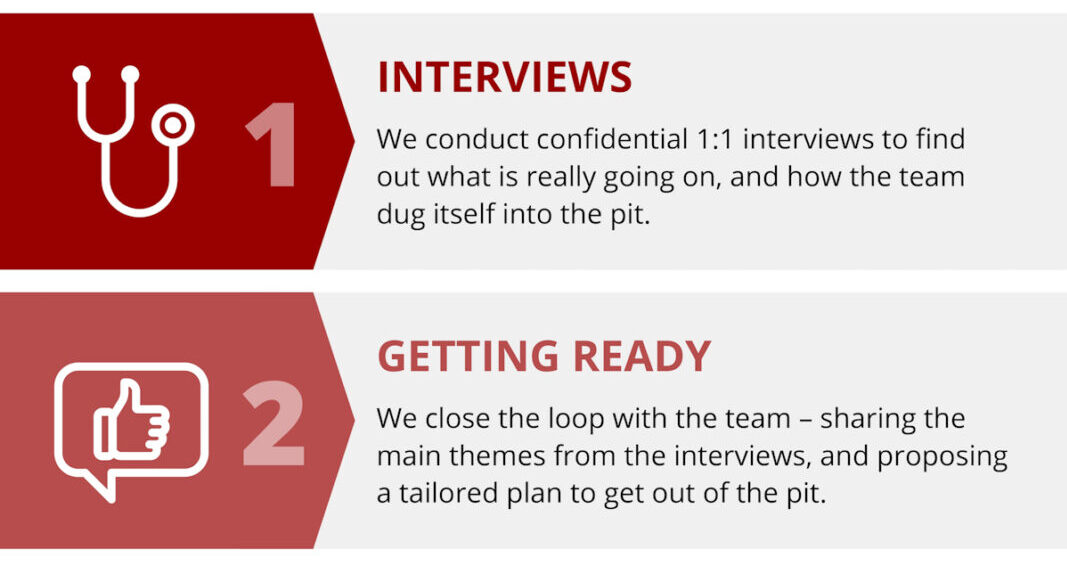How do you transform the dynamics of a team (leadership or otherwise) from dysfunctional to…
Should HR source more of its managers from the business?

Premier US-based association HRPS (executive arm of SHRM) invited Edmond Mellina to contribute monthly to its brand new blog on HR, people and strategy. An HBR interview of Bernard Fontana, a global CEO who had a stint as CHRO, provided the starting point for this blog post…
This post also appeared on the blog of the Strategy Capability Network.
——————
Bernard Fontana is a rare case: on his way to becoming CEO of Swiss-based global cement maker Holcim Ltd, he had a stint as CHRO. For three years he was executive vice-president of HR for the Flat Carbon division of ArcelorMittal, the world’s leading integrated steel and mining company (he also had IT and business development in his portfolio).
In a recent interview with Harvard Business Review (HBR), Fontana credited a former boss for suggesting that working in HR might be worthwhile – telling him: “You’ll learn a lot, and it will be useful if you become a CEO.” So when the opportunity came along, Fontana grabbed it. He doesn’t regret his decision. As he explained to HBR, a CEO’s ultimate responsibility is to sustain the transformations he or she initiates. It requires developing a new generation of leaders who will continue the journey after the CEO. HR is obviously key to this process. Fontana also said that thanks to his HR experience he is a more effective CEO during times of change. Not surprisingly, he now puts some of his up-and-coming executives into development jobs in HR.
Other CEOs have had a stint in HR; and other companies are using high-level HR jobs as developmental opportunities for executives (in the article, HBR cited Deutsche Bank, Nestlé, Philip Morris and Zurich Insurance). However these practices are not widespread.
Similarly, HR executives often spend their entire career in HR. And when looking at the middle-management ranks in HR, we rarely see people who came from the business side.
That is too bad. In addition to providing development opportunities to the individuals involved, these “cross-pollinations” help HR and the organization by:
- Bridging the HR and business worlds;
- Injecting stronger business thinking into the HR function;
- Getting non-HR leaders to better understand and appreciate the people side;
- Facilitating strategy execution.
There is just one CHRO; but there are plenty of middle-managers in HR. Hence, the focus should be on these roles.
This reminds me of my earlier career, when running IT was part of my responsibilities. One of my biggest challenges was to break down the Us-versus-Them mindset that often existed between IT and the business. I also had to ensure the IT leaders where thinking business first, technology second (the reverse is a kiss of death for IT leaders!).
One of the tactics I used with great success was to fill some of the middle-management roles in IT with leaders sourced from operations or other support functions (e.g. Finance; Marketing). I hand-picked them carefully: respected and effective leaders; passionate and knowledgeable about the business; with a keen interest in technology and experience driving business results with it.
Very quickly, these “business IT leaders” were able to focus their technology teams on business priorities. When working with the “pure IT leaders” in our team, they asked the right questions – i.e. the kind that the business side would ask. When interacting with internal clients, they talked business very naturally. When working on strategic initiatives, they leveraged their relationships with former colleagues. They worked closely with the “pure IT leaders” to ensure IT was propelling the business forward. They helped the business understand how technology could be used for further competitive advantage.
Of course, because the centers of excellence on the back-end were highly technical, I usually kept “pure IT leaders” at their helm. The “business IT leaders” were heading client-facing functions on the front-end or solution centers in the middle.
As I reflect on this, I wonder:
- Why doesn’t HR get more of its middle-managers from the business side?
- Which HR areas would offer the best opportunities for these leaders?
I am not sure about the answer to the first question. Maybe HR doesn’t see a need because it already has business partners or client relationship managers who are in charge of bringing the business perspective to the table.
However, it would help to have other people promote a “think business first, people solution second” mindset within HR. The right leaders coming from the business side would do that quite naturally.
As for the second question, I think the learning and development function should be on the list of potential areas for non-HR leaders. First, it is not as technical as other areas. Second, there are success stories of non-HR managers who have excelled running learning and development. Last, and most definitely not least, because training tends to get lots of push-backs from the business.
Should we see more business folks in HR? Tell us what you think.
Copyright © 2015 by ORCHANGO. All rights reserved. | Photo credit: ©Flickr.com/udithawix
ABOUT HRPS
HR People & Strategy (HRPS) is a strategically focused, ground-breaking network of influential HR executives and innovative HRM professionals representing the world’s most prominent organizations. HRPS is regarded by many as the premier professional organization focused on the intersection of people and strategy. HRPS is affiliated with the Society for Human Resource Management (SHRM), the world’s largest HR association. www.hrps.org.




This Post Has 0 Comments